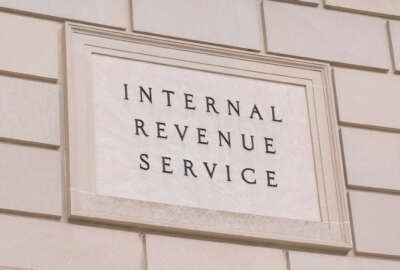How DHS plans on spending its federal research dollars
The DHS's Science and Technology Directorate has formulated the agency's first ever Innovation, Research and Development (IRD) Strategic Plan.
Tasked by Homeland Security Secretary Alejandro Mayorkas, the Department of Homeland Security’s Science and Technology Directorate has formulated a plan for the agency’s investment goals in specific research areas. This Innovation, Research and Development (IRD) Strategic Plan is DHS’ first ever. To learn about what it calls for and how it came together, Federal News Network’s Eric White talked with Jon McEntee, who is operations and requirements director with DHS S&T.
Interview Transcript:
Eric White Tasked by Homeland Security Secretary Alejandro Mayorkas, the Department of Homeland Security Science and Technology Directorate has formulated a plan for the agency’s investment goals in specific research areas. This innovation research and development strategic plan is DHS’s first ever. To learn more about what it calls for and how it came together, we welcome Jon McEntee, who is operations and requirements director with DHS S&T. Mr. McEntee, thank you so much for taking the time.
Jon McEntee Oh, thank you for having me.
Eric White Of course, of course. So why don’t we just start with getting an overview of what exactly is this document? As I mentioned, it’s the first ever from DHS. Is it just calling for where you want to put specific research dollars, or what’s the deal here?
Jon McEntee So we refer to it as IRD. So it’s innovation, research and development. So, the IRD strategic plan is the department’s blueprint of priorities and associated resourcing decisions. It’s put together to prepare DHS and the homeland security enterprise to address future threats and hazards. And the homeland security enterprise includes federal, state, local, tribal, territorial, as well as private entity partnerships, those that want to protect the homeland. So it was put together to not only internally coordinate and collaborate investments across the department, but also as a demand signal to our external partners within industry, international, interagency, and academia, to showcase the IRD needs through FY 30. It really looks to collaborate, again, not only internally, but externally. And we also performed internal analysis to help with that demand signal. It’s going to show the major muscle movements where the department wants to be, and these cross cutting IRD things make up what we call the strategic priority research areas. And those are optimal mission impacts the department’s going to be facing over the future years to come. We identified eight of them, and we call them, we refer to them as SPRAs. They include advanced sensing, artificial intelligence and autonomous systems, biotechnology, climate change, communications and networking, cybersecurity, data integration, analytics, modeling and simulation. And finally, digital identity and trust.
Eric White Yeah, we’ll get into a couple of those in a little bit. I just wanted to take a step back. And, you know, you mentioned how you looked at the internal priorities of where the department wants to be, how did that decision process go? Because it’s so hard to see what the next threat is going to be, especially when your area of coverage is as large as the DHS’s is. You know, how did you come up with those strategic priority research areas, or SPRAs as you mentioned?
Jon McEntee It was absolutely a collaboration across the department. We spent about eight months working with all the DHS components. And you know, we had to first inventory all of the IRD activities. We conducted a SWOT analysis, which is strengths, weaknesses, opportunities and threats. We held a futures workshop. We collected component future trends assessments that included risks, threats, challenges. And we also reviewed all the existing national DHS and component IRD strategies and guidance. So what we ended up putting together as a culmination of of information that identifies where improvements are needed to stay ahead of the threats. It speaks to the “what,” not necessarily the “how,” meaning technology evolves rapidly. And we want to perform a technology solution analysis as close to the implementation here as possible. And we have to continue to monitor the evolution of technology throughout the lifecycle with any effort that we do. For example, if we do a technology solution too soon, in looking at FY 30, we run the risk of obsolescence. So it’s a delicate balance between out year planning, as well as current year execution.
Eric White I want to zero in on just one other part of your first answer, which you’d mentioned your partners in industry. So this is kind of you putting up the flag as well, saying, hey, this is what we’re going to be interested in in the future if you want to work with us. Right?
Jon McEntee Exactly. And it’s that demand signal. When I say the homeland security enterprise, and it’s every entity that wants to protect the homeland. And we know that there’s a lot of innovation and investment that has gone into that, and we want to be able to tackle it and to partner with those external entities. We actually held a technology innovation network event back in October, to present some of our initial findings of our analysis and to gain additional feedback. At the event, we also had our Office of Procurement operations there. And S&T’s office of industry partnerships, to help answer the question how to do business with DHS, because you know that linkage is very important. And once we gain that level of networking that enables us to work with them in the future as well. And so we did a showcase also at the Consumer Electronics Show. We’re doing another event in Monterey, California at the Naval Postgraduate School later this month. It’s with the Military Operations Research Society. And we have a number of other, you know, engagements planned the balance of the year. But again, the important piece is, hey, let’s leverage a lot of that great innovation the industry is already working and tailor it to Homeland Security enterprise needs.
Eric White We’re speaking with Jon McEntee. He is operations and requirements director with DHS S&T. So this is the first one you all have ever done. How will this document change the way that S&T does invest its dollars, and what was the difference before this document was formulated? Were you just kind of playing whack-a-mole and saying, well, we definitely are going to need to do this, let’s put money there? Or was it, you know, a little bit more structured than that? I’m sure it was.
Jon McEntee Right. Traditionally, a lot of what we did in the past was individual component IRD analysis. And what this does, it looks across the department. And it takes a different tack. It’s a collaborative approach. And identifying and leveraging leveraging each other’s investments internally, but then it helps us to plan across the department together, and to focus our limited resources on the department’s highest priorities. And again, this allows us to complement one another, and also to avoid duplication and effort. And this is why we develop those themes, the SPRAs, so that we can identify those major muscle movements that impact multiple components, not just singular components.
Eric White Yeah, let’s get into those SPRAs. It just speaks to, once again, the vast amount of coverage that DHS is responsible for. The ones that stick out the most to me probably are cybersecurity and AI, just because those are definitely the talk of the town. But you know, bringing back in biotechnology, which, that used to be one of the number one threats everybody was afraid of, but it’s coming back into the realm it seems, and as well as advanced sensing. I mean, it is all here, you know, how are you going to dictate which ones require more attention, I guess?
Jon McEntee And that’s one thing we’ve developed internally within the department. We actually stood up what’s called the IRD Coordination Council. It’s co-chaired by the undersecretary for science and technology, as well as the undersecretary of management. And the council’s goal is to ensure that the most pressing challenges the department faces, have appropriate and effective investments to support those mission areas. And you know, and through that, that helps us with prioritization as well. And the IRD helps us to filter into those common themes, SPRAs, and also identify those areas that we need to tackle first. And so during the first year of investment, what we plan to do is look at all the SPRAs across the board, and develop roadmaps and determine where the department currently is, and also where we want to be through FY 30. And so that’s kind of the goal the first year, because this enables us to better complement each other’s investments. And so in looking at this helps us to identify those areas that have no investments. And we call those IRD deltas. And again, now that the plan is released, we also want to enhance our external partnership and leverage those existing and future IRD investments. Because in those areas where we have IRD deltas, industry or some of our external partners, interagency, academia, or even international may have solution sets or capability enhancements that we can look at, and to look at these common denominators that we’ve identified. And so this is that demand signal. We see this as a target market opportunity for those external investors to make their own business decisions.
Eric White Jon McEntee is operations and requirements director with the Department of Homeland Security Science and Technology Directorate. Thank you so much for chatting with me.
Jon McEntee Of course.
Eric White And we’ll post this interview along with the link to the document on our website at federalnewsnetwork.com. You can also subscribe to the Federal Drive wherever you get your podcasts.
Copyright © 2025 Federal News Network. All rights reserved. This website is not intended for users located within the European Economic Area.
Eric White is news anchor and Federal Drive producer at Federal News Network.
Follow @FEDERALNEWSCAST






